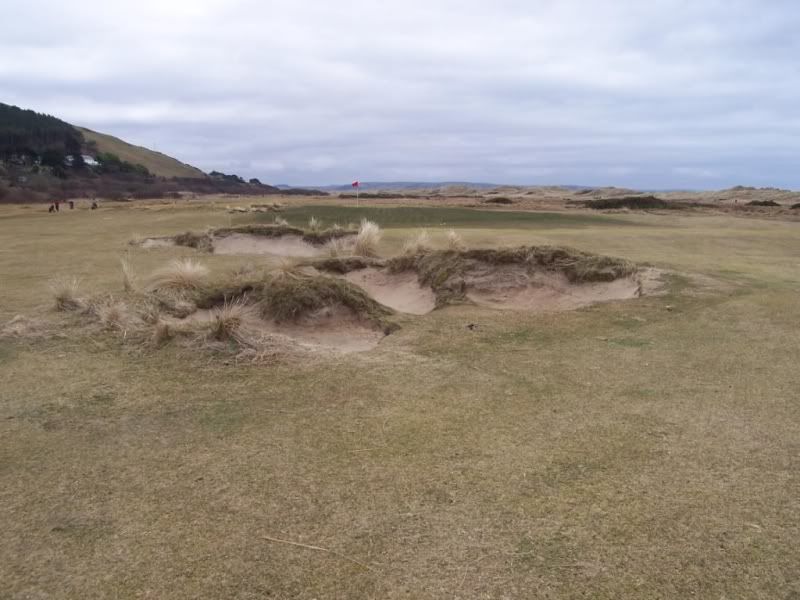I'm not particularly interested one way or another in what bunkers look like, but this thread reminds me that the subject is evergreen/a perennial because there is no other feature in gca so obviously linked (and comparable) to the past, and to the traditions of a game that is so steeped in tradition. And in that context, I come back to the belief that practically everything those thrifty old Scots did back then was sensible and good for the game -- a game that, and this is important I think, they loved but that they kept in its proper perspective. Where are we going to play this game? On that linksland -- it's not good for growing food. What will we do with these bunkers and the edges eroding and the sand flying out? Well, we're not going to be spending all our free time and labour messing about with pits in the ground -- so lets face them with stacked sod once and be done with it. All of which is to say: if you go with big greens and wide fairways and minimal inputs/maintenance and sod-faced bunkers, well then, you simply cannot go wrong! Of course, if you try to "borrow" instead of "steal outright", that's when the illusion -- i.e. the link to the past -- is shattered.
Peter, your initial comment reminds me of the section in Dr. Mac's
Golf Architecture about an acquaintance not giving a lick about beauty. Bunkers are perhaps the defining visual element on a golf course; depending on the context (site) they can either add or detract. Aside from the constant reconstruction of them, those bunkers Pat posted don't look pretty even if they are in the right context; that could be one reason you don't see them in the US. Their course seems to work very well from a strategic standpoint though, and given the choice I'd take the latter over the former... but why not shoot for both?
Modern sod bunkers seem to require as much labor and material as other types, especially considering these bunkers seemingly need to look crisp and clean today to met the expectations of The Herd; it's simply that some of this is deferred to a later date. If it's every 5-years and you have 80 such bunkers, you'll have constant work rebuilding, and it's not just the sod in some of these, it's the railroad ties behind them too that have to be replaced, albeit at a less frequent pace than the sod! You did see the number of men required to build that one bunker at the Jubilee course. You didn't see the machines, the hauling in and out of material, and all the man hours.
I'm partial to the look of sod bunkers in one of the old books, and it is similar to the photo Sean posted earlier. Grass clumps growing out of the face, and the sods breaking down some with sand flashed a little up the face, a little concave rather than sitting flat at the bottom. It looked like the sods had been there a long time, much, much longer than 5-years. It had both the feel of man and the weathered touches only Nature and time can bring.
The photo of the Redan with Ben Sayers peering over the vertically boarded up face of the bunker is interesting. My guess is they boarded up the front of the bunker because they feared losing the green. In that photo you see... boards, stacked sod and the natural broken edges created by man's involvement mixed with Nature.
I wonder what the Scots were thinking when they sodded the very first bunker. I wonder when it was. Was it to save a green from having a bunker eat into it? Was it because of wind depositing sand on a green? Did they want to restrict further growth of a bunker set into a dune? And I wonder what the discussions were when it came to expanding that concept, or was there little discussion, just folks who said screw it, let's do it when nobody is looking; a little like Dr. Mac's work at Alwoodley where they quietly defied others and went Natural. One thing I'm pretty sure of, is it wasn't done for differentiation... marketing purposes.
Sean,
I think the bunker you pictured at Aberdovey looks great. It also offers more options and plays more on the mind after you know your ball has landed in it. It would have the golfer hoping he had a good lie and ability to attack directly to the flag. So many possible ways to recover. More interesting than if they were four separate pots. I haven't been to Kingston Heath, but I love the bunker work in the photos I've seen; this has a similar feeling to some of their bunker work... perhaps better!

